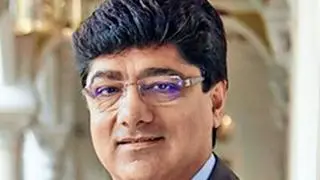At the High Street Phoneix mall in South Mumbai, a mass big box retailer like Big Bazaar will be giving away 40,000 sq ft of its retail space to Swedish brand H&M. While Big Bazaar is being pushed to a mall in the suburbs in Matunga, H&M will cater to the upmarket south Mumbai clientele with its first store this fall. The lifestyle brand is known for its fast fashion and affordable tag, is considered to be a premium and a bridge to luxury brand in India, but has a ‘value’ proposition.
“We have engaged in full FDI in India since we are confident of getting consumers and do not need a local partner,’’ says Keerti Kataria, Press Showroom Manager, H&M, unveiling its autumn winter collection in Mumbai recently.
According to the Goldman Sachs research report — The Asian Consumer — India Consumer Close-up: While brand investing will be a big theme in everything, India’s urban mass will trade up into brands that offers the most incremental value, but may not readily jump to aspirational brands. However, the report further states that the growth of luxury and high-end, in general, will be limited. Culturally, India's affluent consumers tend to shy away from ostentatious display of wealth.
“There is an element of truth in the report since Indians are instinctively value laden and would think twice behind splurging on a Louis Vuitton bag or an Armani suit. While the reality of the luxury market is there, the price points are not there. They are not into buying random luxury products and there is no repeat purchase behaviour happening either,’’ says Divyan Gupta, CEO, Artsanddecor.com, which sells high-end lifestyle luxury brands.
Taking the example of Apple’s decision to sell refurbished phones in India, Gupta further adds, “While Indians would have liked to flaunt their Apple phones, they were not willing to pay the price for it. So when sales were going down for Apple in other markets, it did think of selling its refurbished phones in India.’’
However, while India is an emerging market for luxury goods, most of the purchases are likely to be made outside the country.
“The reports on luxury retail tend to take into account goods bought in the country. But, in reality, almost 99 per cent of luxury goods are not bought in India. While the Indian psyche is driven towards value luxury and discounting, there is a fine line between what they aspire and the price they are willing to pay for their aspirations,’’ observes Vijay KG, Founder, Luxepolis, an online portal for selling pre-owned luxury goods.
Giving more insights into the luxury market, Publicis Media India CEO Anupriya Acharya adds, “The country is witnessing a wave of investment, positive sentiment and an increase in the sheer number of High Net worth Individuals (HNWI). The luxury market in India has been growing at a CAGR of 25 per cent over the last couple of years. Currently, it is estimated at $14.7 billion and would soon cross $18.3 billion. Fragrances, watches and jewellery are top sellers in the luxury market, followed by skincare, apparel and fine dining. Consumers today aspire for value, even if it means paying a premium for it.”
For luxury goods, the Delhi NCR market has the highest potential, followed by Mumbai, Bengaluru and Chennai. Non-metro cities such as Ahmedabad and Chandigarh are also growing in terms of income and propensity to buy luxury goods.
India’s number of billionaires and millionaires ranks number 4 and number 8 in the world, respectively.
But beyond these movers and shakers, the addressable market for high-end luxury goods drops precipitously; it is limited to the upper echelons of the urban middle, a group of 27million workers who earn less than $1,000 per month, often as the sole earner for his family, according to the Goldman Sachs report.
Pricing and distribution are the other key challenges. India's pricing of luxury goods are generally over 20 per cent more expensive than other major markets, after including duties and taxes.








Comments
Comments have to be in English, and in full sentences. They cannot be abusive or personal. Please abide by our community guidelines for posting your comments.
We have migrated to a new commenting platform. If you are already a registered user of TheHindu Businessline and logged in, you may continue to engage with our articles. If you do not have an account please register and login to post comments. Users can access their older comments by logging into their accounts on Vuukle.